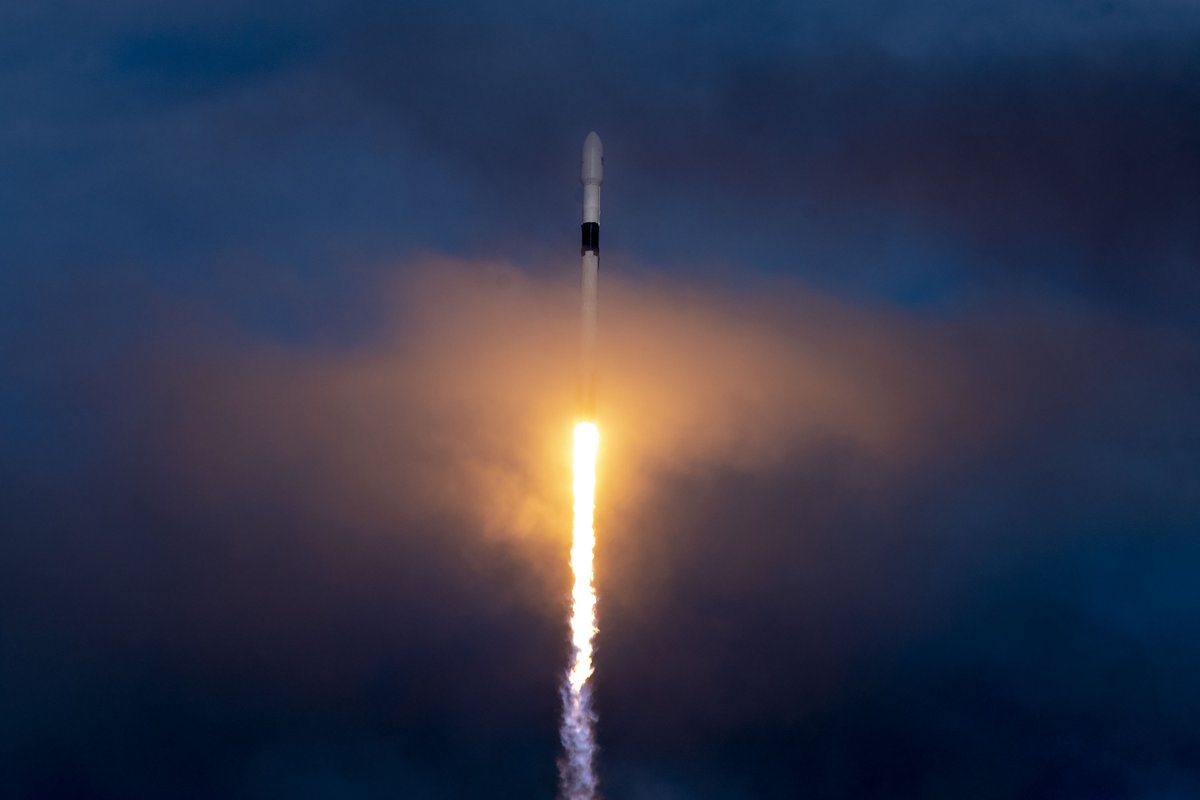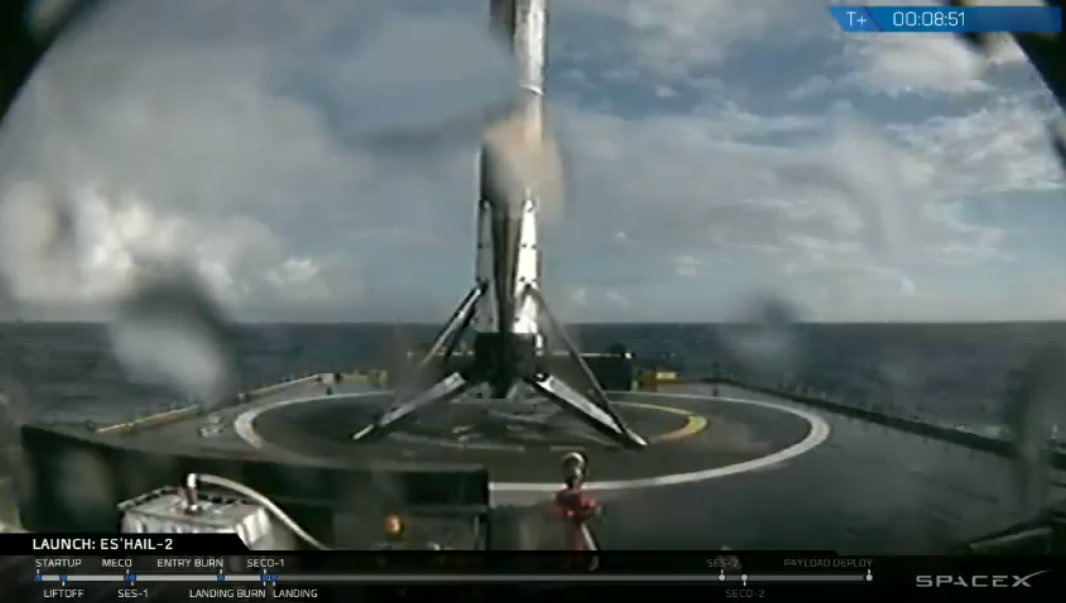A pre-flown SpaceX Falcon 9 rocket has aced another launch-and-landing mission.
The two-stage Falcon 9 lifted off at 3:46 p.m. EST (2046 GMT) today (Nov. 15) from Launch Complex 39A at NASA's Kennedy Space Center in Florida. About 32 minutes later, the rocket successfully deployed its payload, the Es'hail-2 communications satellite, into an elliptical geostationary transfer orbit.
The rocket's first stage was already back on Earth at that point, standing tall on the deck of the SpaceX droneship "Of Course I Still Love You," which was stationed in the Atlantic Ocean off the Florida coast. The booster touched down on the robotic ship about 8.5 minutes after liftoff. [See more photos of SpaceX's Es'Hail-2 satellite launch!]
The landing was the second for this particular first stage, which also helped launch the Telstar 19 Vantage communications satellite on July 22. "Of Course I Still Love You" served as the landing platform on that day as well.
SpaceX has now pulled off 31 first-stage landings and reflown landed boosters on 17 occasions. These activities are part of SpaceX's plan to cut the cost of spaceflight dramatically, thereby making the settlement of Mars and other ambitious exploration feats economically feasible.
Indeed, company founder and CEO Elon Musk has repeatedly said that he founded SpaceX in 2002 primarily to help make humanity a multiplanet species.

SpaceX did not attempt to recover the payload fairing — the protective nose cone that surrounds spacecraft during launch — today, because its net-equipped boat, Mr. Steven, is on the West Coast. (Mr. Steven has tried to snatch falling fairings out of the sky on several occasions but has come up empty so far.) [See the Evolution of SpaceX Rockets in Pictures]
Get the Space.com Newsletter
Breaking space news, the latest updates on rocket launches, skywatching events and more!
The Es'hail-2 spacecraft was built by Mitsubishi Electric Corp. and will be operated by Qatar-based company Es’hailSat.
Es'hail-2 "features multi-transponder Ka-band capacity, providing business and government sectors with secure communications across the Middle East and North Africa region," SpaceX representatives wrote in a mission press kit.

"The spacecraft’s multi-mission architecture will enable Es'hailSat to respond to demand for the fastest-growing applications in the Middle East and North Africa, including content transfer, broadcast distribution, enterprise communications and government services," they added.
Today's launch was the first leg of a scheduled spaceflight trifecta that runs through Saturday morning (Nov. 17). Russia plans to launch a robotic Progress spacecraft toward the International Space Station (ISS) on a cargo mission tomorrow afternoon (Nov. 16), and the American company Northrop Grumman will loft its own uncrewed resupply craft, known as Cygnus, in the predawn hours Saturday.
You can watch both of those liftoffs here at Space.com when the time comes.
Mike Wall's book about the search for alien life, "Out There" (Grand Central Publishing, 2018; illustrated by Karl Tate) is out now. Follow him on Twitter @michaeldwall. Follow us @Spacedotcom or Facebook. Originally published on Space.com.
Join our Space Forums to keep talking space on the latest missions, night sky and more! And if you have a news tip, correction or comment, let us know at: community@space.com.

Michael Wall is a Senior Space Writer with Space.com and joined the team in 2010. He primarily covers exoplanets, spaceflight and military space, but has been known to dabble in the space art beat. His book about the search for alien life, "Out There," was published on Nov. 13, 2018. Before becoming a science writer, Michael worked as a herpetologist and wildlife biologist. He has a Ph.D. in evolutionary biology from the University of Sydney, Australia, a bachelor's degree from the University of Arizona, and a graduate certificate in science writing from the University of California, Santa Cruz. To find out what his latest project is, you can follow Michael on Twitter.









